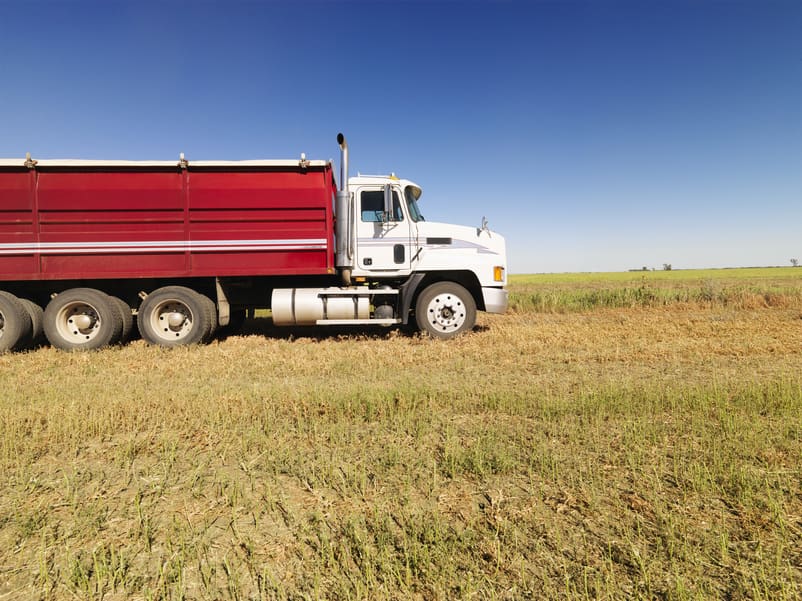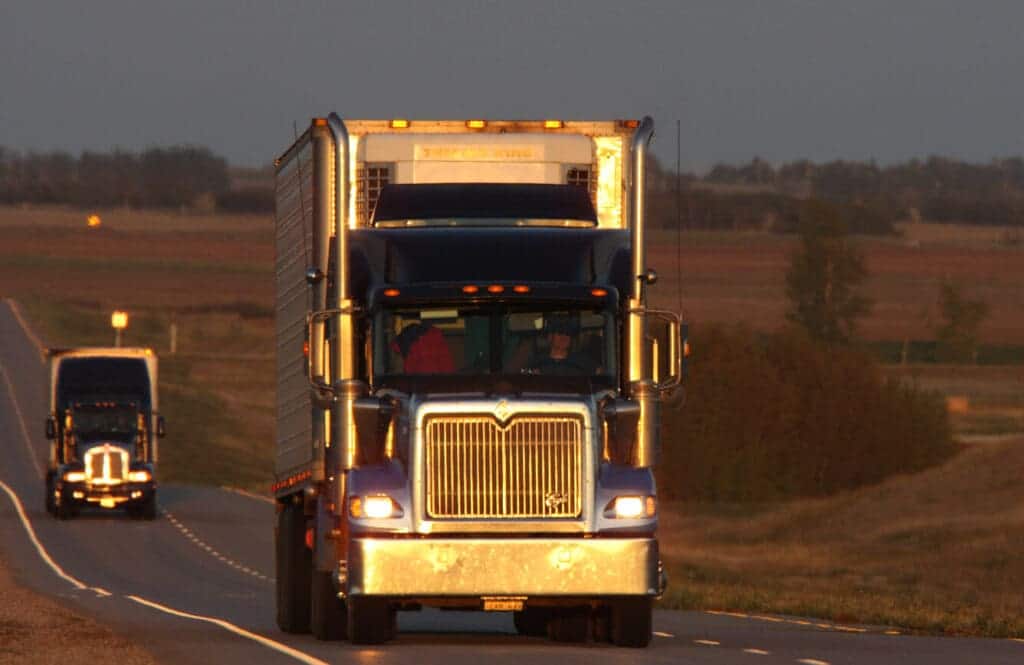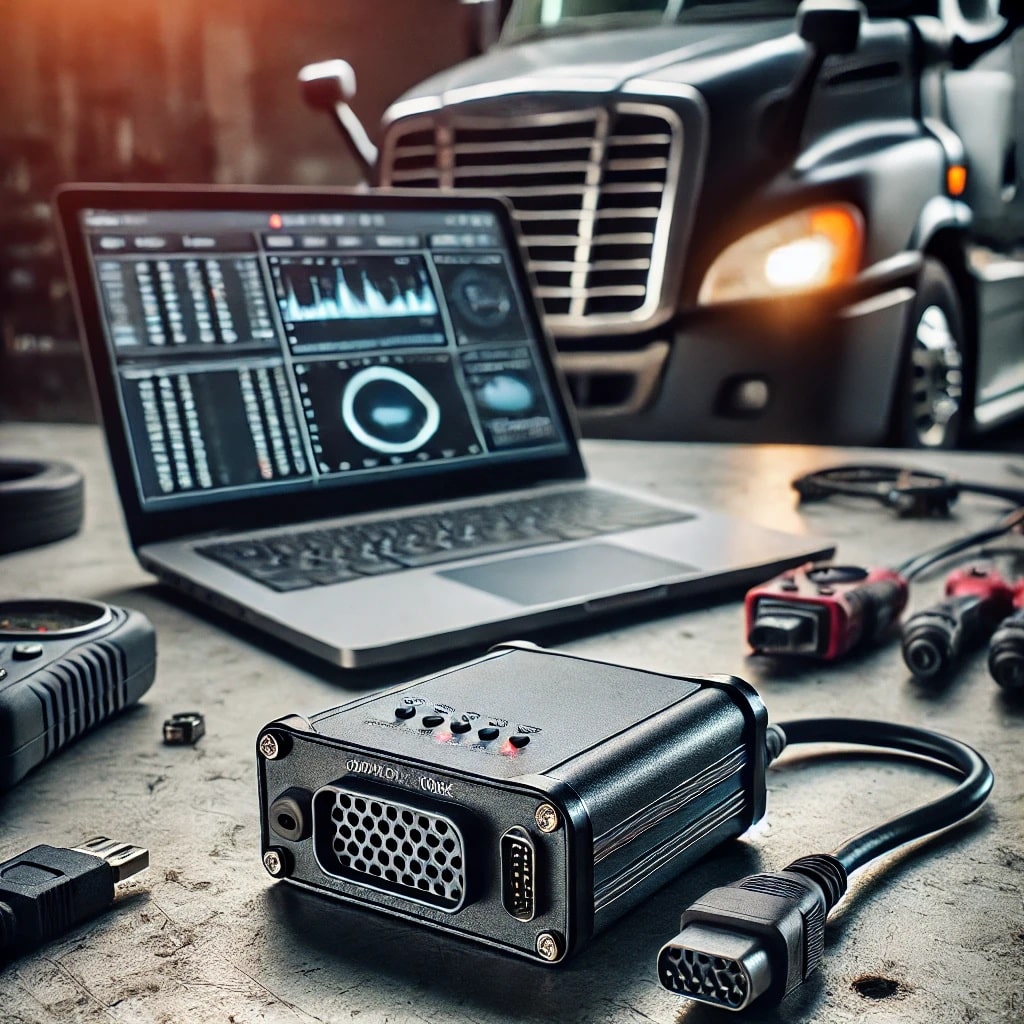Semi-trucks, often known as 18-wheelers, are necessary for long-distance transport. The trailer’s “semi” design lacks a front axle and relies on the tractor unit for support. This makes it simple to connect and disconnect trailers, making it easier to load and unload freight quickly. Semi-trucks are made up of a trailer unit with several axles and wheels and an engine-powered tractor unit.
The 18 wheels of the trailer evenly distribute weight and improve stability while being transported. The term “semi” refers to its effective cargo support and adaptability and derives from the semi-trailer design. These 18-wheelers are essential for efficient logistical operations.
What is a Semi Truck and Trailer?
A semi-truck and trailer, sometimes known as an 18-wheeler, is a strong commercial vehicle combination used for long-distance transportation of commodities. The front axle, driver’s cabin, and engine are all located inside the semi-truck, often referred to as the tractor unit. On the other hand, the trailer is a distinct unit without a front axle and is supported by the tractor unit. The trailer normally has many axles and wheels, with a total of 18 wheels on average. This arrangement improves stability during transit and enables effective weight distribution. To transfer goods on a big scale, semi-trucks, and trailers are crucial elements of the logistics sector.

Also Read: UPS Truck Accident
Types of Semi Trucks
There are several different kinds of semi-trucks, each created to address a particular transportation demand. Let’s examine and talk about the five most typical sorts of semi-trucks.
- Flat Roof Sleeper
The flat roof sleeper is a particular kind of semi-truck with a horizontal roofline and little headroom inside the sleeping area. This style is appropriate for local deliveries or shorter hauls when drivers would not need long stretches of downtime. Although some internal room must be given up, the vehicle has a more aerodynamic and compact profile, which makes driving and maneuvering in cities easier.
- Mid-Roof Sleeper
In comparison to flat roof sleepers, mid-roof sleeper semi-trucks have a slightly elevated roofline, giving the sleeping area extra headroom. This kind of vehicle is frequently used for local haulage and provides better comfort for drivers who occasionally need to take breaks on longer journeys. The mid-roof sleeper is adaptable for a range of transport activities because it finds a balance between room and mobility.
- Raised-Roof Sleeper
For long-distance transportation, the raised-roof sleeper is intended to offer the most internal room and comfort. It has a substantially higher roofline, which enables drivers to stand up and move about the sleeping area more easily. These vehicles sometimes have extra features like sleeping berths, storage cupboards, and even a tiny kitchen. To provide drivers with a comfortable living area while they are traveling, raised-roof sleeper trucks are the best option.
- Day Cab
Short-haul or local deliveries that don’t require overnight stays are the only purposes for which day cab semi-trucks are intended. Day cabs, in contrast to sleepers, lack sleeping compartments and elevated roofs to increase cargo space. They are more suited for driving in cities and maneuvering confined places since they are more compact, agile, and lighter. In businesses including construction, agriculture, and local distribution, day cabs are frequently employed.
- Slope-Nosed Truck
A slope-nosed semi-truck has a tapered or sloping front end that increases aerodynamics and fuel economy. With less wind resistance and drag, its sleek design enhances performance while using less gasoline. In long-haul transportation, when fuel efficiency is crucial, slope-nosed trucks are frequently preferred.
Recommended Article: Semi Truck Accident Lawsuit
Common Uses of Semi Trucks
Industries employ semi-trucks for a variety of purposes. They are essential for moving freight, transporting products from producers to warehouses, distribution hubs, and retail establishments. They make sure that deliveries are made on schedule to clients, retailers, and regional hubs in logistics and distribution. Transporting big machinery, equipment, and supplies to building sites requires semi-trucks. They transport equipment, cattle, and crops in agriculture. Recycling and rubbish are collected and transported as part of waste management. Additionally, they help with residential and commercial relocation services and deliver fuel from refineries to gas stations. Semi-trucks are used to convey supplies and rescue crews during crises and disasters. They are crucial to current logistics and transportation processes due to their adaptability and capacity for heavy loads.
Why are 18-Wheelers called Semi Trucks?
The trailer unit’s design is where the word “semi” in semi vehicles comes from. A semi-trailer lacks a front axle and is supported by the tractor unit instead, in contrast to a complete trailer that has both front and rear axles. The term “semi-trailer” or simply “semi” refers to the “semi-supported” nature of the trailer. This phrase evolved through time to cover the full set of vehicles, giving rise to the terms “semi-truck” or “18-wheeler” to refer to the tractor-trailer combination. This innovative design makes it simple to attach and detach the trailer, giving you flexibility while loading and unloading items.
Recommended Article: How Long Can Truck Drivers Drive
Frequently Asked Questions (FAQs) – Semi Truck/18-Wheelers
Is a Semi-Truck the Same as an 18-Wheeler?
Yes, it is common practice to use the phrases “semi-truck” and “18-wheeler” interchangeably. Both terms describe the pairing of a tractor unit with an 18-wheel trailer. Power and control are provided by the tractor unit, while the trailer is used to transport the load. The number of wheels on the complete vehicle combination is explicitly referred to as an “18-wheeler” to emphasize its great size and weight-carrying capabilities.
What Category is Semi-Truck?
Heavy-duty trucks or commercial vehicles include semi-trucks in their categories. They are made for long-distance cargo transportation. There are several sorts and categories of semi-trucks based on things like size, weight capacity, and intended usage. Flatbed trucks, refrigerated trucks, tanker trucks, and dry van trucks are examples of typical classifications. These categories aid in identifying the distinctive qualities and capacities of various semi-truck designs, enabling effective selection and use across a range of sectors and uses.
Trust Coluccio Law For All Semi-Truck Legal Issues
Call us today at Coluccio Law for a free quote and expert legal assistance.
Our knowledgeable staff can help you through semi-truck-related legal issues while ensuring that your rights are upheld. You may rely on us to give you the assistance you need for a successful settlement.
Recommended Article: I5 Crash




